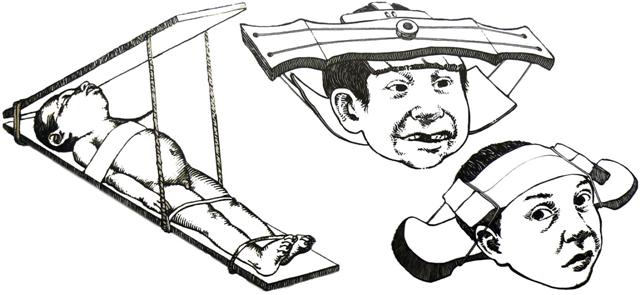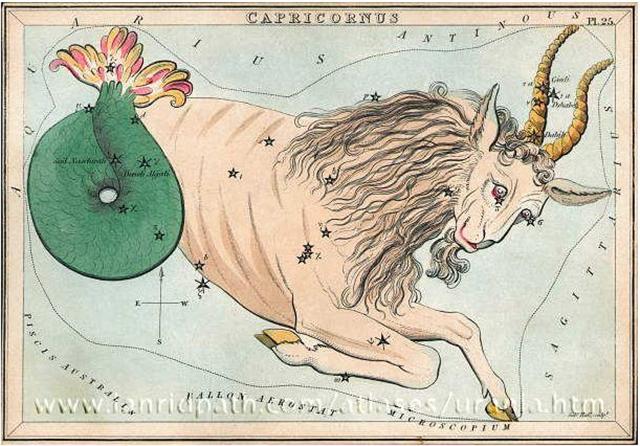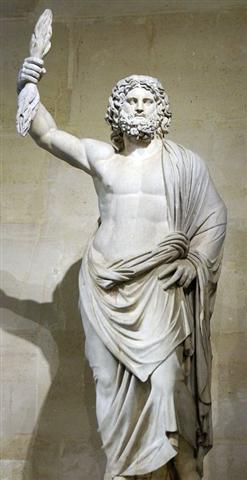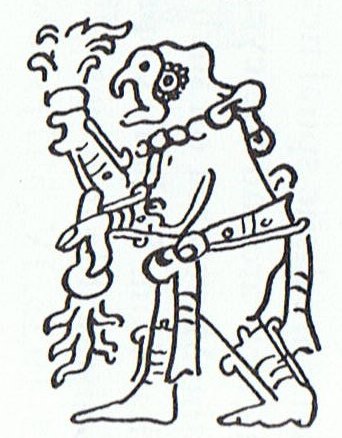Once again. We have been informed that Zeus (the Sky Fire god up above) was born where the Sun entered into the constellation of his foster-brother Aegipan - reasonably equal to his mortal twin living in his timber house under water down in the southern part of the sky:  ... The tradition preserved by Hyginus in his Poetic Astronomy that the constellation Capricorn ('He-goat') was Zeus's foster-brother Aegipan, the Kid of the Goat Amalthea whose horn Zeus also placed among the stars, shows that Zeus was born at mid-winter when the Sun entered the house of Capricorn ... That the Sun-gods Dionysus, Apollo and Mithras were all also reputedly born at the Winter solstice is well known, and the Christian Church first fixed the Nativity feast of Jesus Christ at the same season, in the year A.D. 273. St. Chrysostom, a century later, said that the intention was that 'while the heathen were busied with their profane rites the Christians might perform their holy ones without disturbance', but justified the date as suitable for one who was 'the Sun of Righteousness' ... ... The first Greek lettered star in the Capricorn is ξ, and its heliacal position in Roman times should have been 'December 24:
And once upon a time ξ Capricorni would have risen in NOVEMBER 17 (321), preceding α like a djed column:
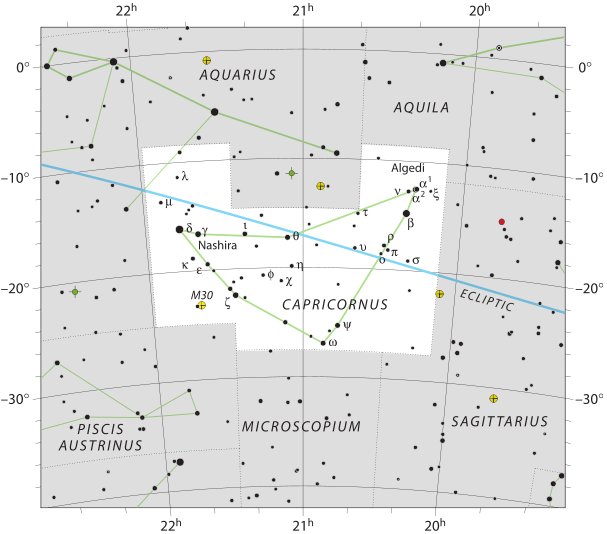  ... In rongorongo times the last Greek lettered star in Orion (ξ) rose with the Sun in June 21. The letter seems to have originated from the Phoenician letter samekh (tent peg, supporting prop), which in turn may have been derived from the ancient Egytian djed column ... The bird in Gb1-2 has been drawn with the same type of protruding back head as the birds drawn where the Pleiades were, viz. at the end of side b of the G tablet:
We can count the distance from the 6 (ono) at the end of the back side of the tablet to the single (one) where Zeus was born:
From Alcyone (Gb8-23) to the end of side b there are 8 glyphs and Gb1-12 is in position 242 (counting also the empty glyph space at the beginning of side b). 8 + 242 (= 2 * 11 * 11) = 250. There is no more manu rere with this type of pregnant back head anywhere else in the text. Converting NOVEMBER 17 (321) to rongorongo times: 321 + 64 = 385 = 365 + 20 = January 20. This was where in rongorongo times the Sun rose at the First Point of the Capricorn.
Towards the watery end of the hairy Capricorn we can see flames emerging at the top, similar to how Jupiter Smyrna and Seven-Macaw indicated flames emerging at the top with water flowing down below (as in the thunder storm clouds).
One of the Pleiades sisters married a mortal: ... To a casual glance, the Pleiades cluster appears as a fuzzy patch like a swarm of flies over the back of the bull ... According to mythology, Alcyone and Celaeno were both seduced by Poseidon. Maia, the eldest and most beautiful of the sisters, was seduced by Zeus and gave birth to Hermes; she later became foster-mother to Arcas, son of Zeus and Callisto. Zeus also seduced two others of the Pleiades: Electra, who gave birth to Dardanus, the founder of Troy; and Taygete, who gave birth to Lacedaemon, founder of Sparta. Asterope was ravished by Ares and became mother of Oenomaus, king of Pisa, near Olympia, who features in the legend of Auriga. Hence six Pleiades became paramours of the gods. Only Merope married a mortal, Sisyphus, a notorious trickster who was subsequently condemned to roll a stone eternally up a hill ... Eratosthenes says that Merope was the faint Pleiad because she was the only one who married a mortal. Hyginus and Ovid also recount this story, giving her shame as the reason for her faintness, but both add another candidate: Electra, who could not bear to see the fall of Troy, which had been founded by her son Dardanus. Hyginus says that, moved by grief, she left the Pleiades altogether, but Ovid says that she merely covered her eyes with her hand ... ... Merope often is considered the Lost Pleiad, because, having married a mortal, the crafty Sisyphus, she hid her face in shame when she thought of her sisters' alliances with the gods, and realized that she had thrown herself away. She seems, however, to have recovered her equanimity, being now much brighter than some of the others. The name itself signifies 'Mortal' ... Electra, although for at least two or three centuries the title of a clearly visible star, has been regarded as the Lost Pleiad, from the legend that she withdrew her light in sorrow of witnessing the destruction of Ilium, which was founded by her son Dardanos ... or, as Hyginus wrote, left her place to be present at its fall, thence wandering to Mizar as Άλώπηξ, the Fox, the Arabs' Al Suhā, and our Alcor [80 Ursae Majoris]. Ovid called her Atlantis, personifying the family. The Pirt-Kopan-noot tribe of Australia have a legend of a Lost Pleiad, making this the queen of the other six, beloved by their heavenly Crow, our Canopus, and who, carried away by him, never returned to her home ...
|
||||||||||||||||||||||||||||||||||||||||||||||||||||||||||||||||||||||||||||||||||||||||||||||||||||||||||||||||||||||||||||||||||||||||||||||||||||||||||||||||||||||||||||||||||||||||||||||||||||||||||||||||||||||||||||||||||||||||||||||||||||||||||||||||||||||||||||||||||||||||||||||||||||||||||||||||||||||||||||||||||||||||||||||||||||||||||||||||||||||||||||||||||||||||||||||||||||||||||||||||||||||||||||||||||




